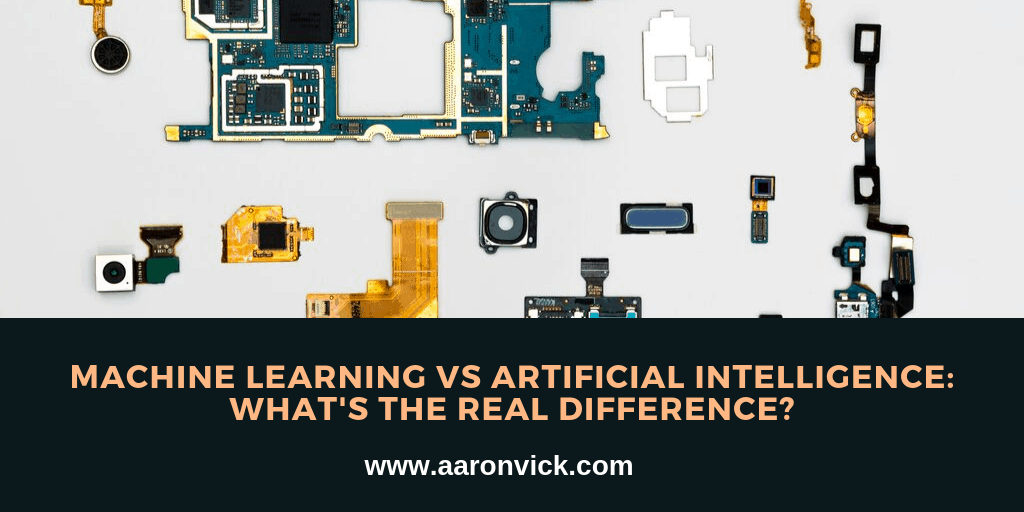IDC predicts companies around the world will invest almost $36 billion in artificial intelligence this year.
The field of AI grew at a rapid pace in the last few years. Recent breakthroughs in technology have contributed to this growth. Machine learning is behind many of those breakthroughs.
What’s the difference between machine learning and AI, though? This guide breaks down machine learning vs. artificial intelligence. I’ll also look at what each means for your business.
Defining AI
Artificial intelligence is a relatively broad term. It refers to the process of making machines intelligent. This process includes computer science and engineering.
Now you’re wondering what’s meant by “intelligent machines.” An intelligent machine performs complex tasks that usually need human input.
These tasks can include things like decision-making or visual perception. A camera doesn’t “see” you, although it can take a picture. An intelligent camera would be able to process the input and report what it “sees.”
Two Types of AI
Most experts talk about two major categories of AI.
The first is applied AI, which is almost everywhere today. Applied AI powers self-driving cars, financial services, and chatbots. These AIs usually handle one specific task.
The second type is generalized AI. This type of AI can handle many different tasks, just like human beings.
Machine Learning vs. Artificial Intelligence
The term AI can refer to any intelligent machine. A chatbot is an AI, just like a self-driving car is. An android would also be an AI.
There are also different ways of making AIs. Some are simple, like the techniques behind “good, old-fashioned AI.” These AIs may be programmed to do things like making decisions.
They usually use “if-then” statements, which lets them process data. If something is true, then the machine will take one action. If it’s false, it will take a different action.
This is simple in principle, but the programming behind an AI can become quite complex. A chess-playing computer would have thousands of “if-then” statements. This programming allows it to decide the most appropriate move to make in a game.
ML is a Subset of AI
Machine learning is another way of programming an AI. You can think of it as taking the simple if-then statements a step further.
The major difference is the machine can alter its programming based on the data it receives. In this way, the machine “learns.”
Netflix offers an example. The platform makes recommendations to users about what to watch next. At first, the recommendations aren’t very good, because Netflix doesn’t know you.
As you watch more on the platform, though, Netflix “learns.” Its algorithms adjust to your preferences. It can then make better recommendations for shows you might like.
What is Deep Learning?
One thing that can confuse people is deep learning vs. machine learning. Deep learning is a specialized type of machine learning. It mimics human learning processes.
Neural networks are the example here. They’re used for complex tasks that normally need human input. Image recognition or natural-speech processing are examples.
Suppose you have a neural network programmed to identify sheep in pictures. At first, the network isn’t very good at recognizing the sheep. As it “sees” more pictures of sheep, it becomes better at recognizing when there are sheep in an image.
Soon, the network can recognize sheep in meadows and barnyards most of the time. Using its new rules, it becomes better at recognizing sheep, even when they’re in strange places.
This is harder than making recommendations because the machine has to process what it “sees.” In essence, it first has to understand the picture, which is a complicated process in itself. Then the machine has to categorize it and “learn” from it.
Machine Learning is Always AI
It’s easy to remember the differences between deep learning, machine learning, and AI.
All deep learning is machine learning, but it’s only one type of learning machines can do. Likewise, all machine learning is AI, but not all AI is machine learning.
Using Machine Learning in a Business
I’ve already mentioned a few different uses for machine learning powered AIs. Many businesses have already adopted AI, most of them backed by machine learning.
The reason for this is clear. Machines that learn can adjust to changing conditions.
The more a chatbot interacts with your customers, the better it gets at delivering customer service. A stock-trading platform alters its trading strategies based on changing market conditions.
The medical field uses machine learning too. New AIs are trained to diagnose medical conditions. Some machines are already very accurate at diagnosing some conditions.
From this quick survey, it’s easy to see that the possibilities are almost endless when a machine can learn. The right AI could mean you can get back to the really important tasks for your startup.
Using AI in a Business
If you’re adopting machine learning technology, you’ve already invested in AI. Machine learning isn’t the only type of AI out there, though.
Many businesses have been using AIs for some time now. An example is optical character recognition. This technology allows a machine to create a digital version of printed documents.
If you don’t need the machine to learn and adjust predictions, a simpler AI may be the right choice.
Where AI is Going
Looking ahead, the question won’t be machine learning vs. artificial intelligence. It will be about how machine learning and artificial intelligence work together. Research teams are already discovering what happens when they combine deep learning and other mathematical models.
The combination of the two should soon show the world even more sophisticated AIs. They’ll be capable of more than ever.
Having the right technology is key to getting your business off the ground. Learn more about how to take flight with your startup with more great articles from the blog.
